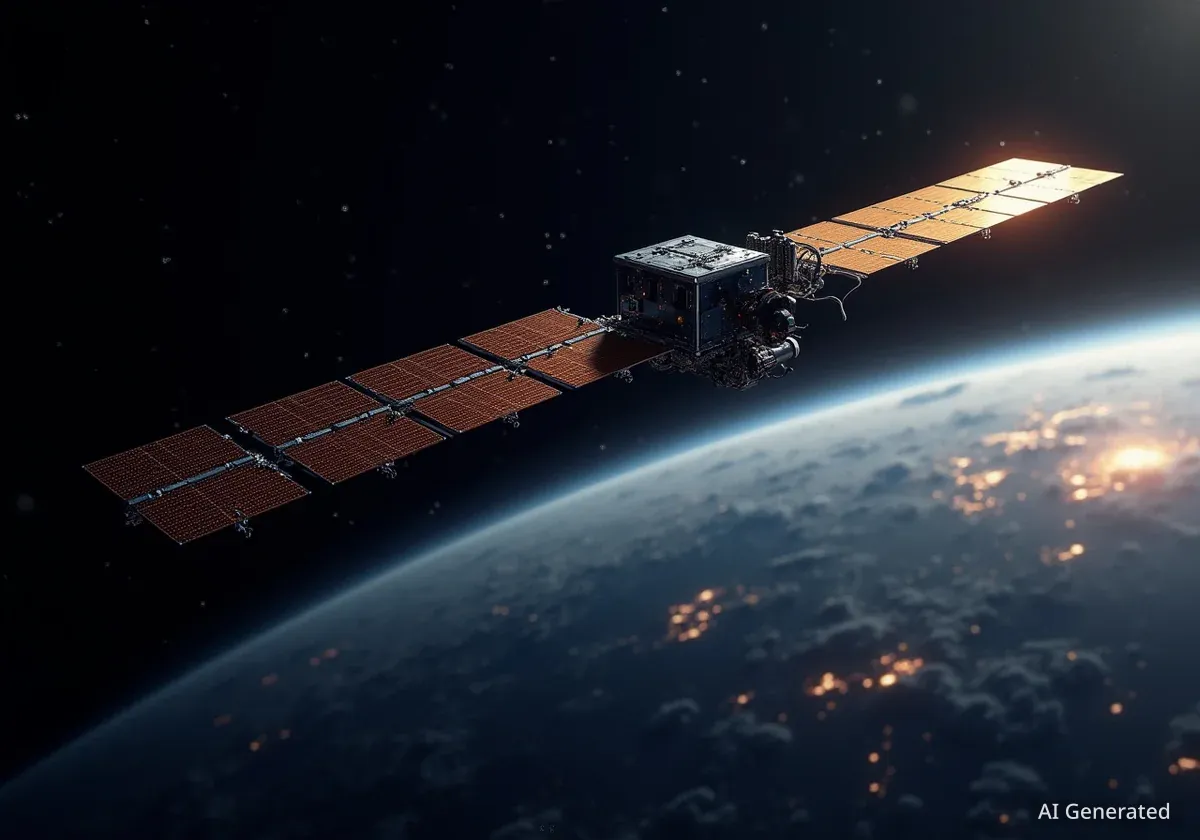The United States Space Force has launched its secretive X-37B space plane on a new mission to test advanced technologies, including a revolutionary quantum sensor for navigation without GPS and a high-bandwidth laser communication system. The uncrewed, reusable vehicle, developed by Boeing, is conducting a series of experiments in orbit designed to enhance U.S. space capabilities and resilience.
Key Takeaways
- The U.S. Space Force's X-37B is testing a quantum inertial sensor for precise navigation in GPS-denied environments.
- The mission will also demonstrate inter-satellite laser communications, a high-bandwidth system for secure data transfer.
- These technologies aim to improve the resilience and functionality of U.S. satellite systems against potential disruptions.
- Developed by Boeing, the X-37B has been conducting classified and unclassified missions for over 15 years.
The X-37B's Strategic Mission in Orbit
The X-37B is an autonomous, reusable spacecraft that operates for the U.S. Space Force. Resembling a miniature space shuttle, it launches vertically inside a rocket fairing and lands horizontally on a runway. For more than a decade, this vehicle has served as a crucial platform for testing and deploying new space technologies.
While the full scope of its missions remains classified, the Space Force has disclosed key objectives for its current flight. The primary goals involve validating new systems that will ensure the nation's assets can operate effectively, even if traditional infrastructure like the Global Positioning System (GPS) is compromised or unavailable.
A Platform for Innovation
The X-37B program represents a key component of the Department of Defense's effort to maintain a technological edge in space. Its ability to return experiments to Earth for inspection provides valuable data that cannot be obtained from traditional satellites, accelerating the development of next-generation space hardware.
This mission continues the vehicle's legacy of pushing the boundaries of space technology. The experiments on board are not just theoretical; they are practical tests of hardware that could soon be integrated into the broader U.S. satellite architecture, enhancing both military and civilian capabilities.
Testing Navigation Beyond GPS
One of the most significant experiments on this mission is the testing of a new quantum inertial sensor. This device is designed to provide extremely precise positioning and navigation data entirely independent of external signals, such as those from GPS satellites.
In a press release, Boeing described the device as the “highest performing quantum inertial sensor ever tested in space.” The technology works by using the principles of quantum mechanics to measure motion and orientation with incredible accuracy. This capability is critical for operations in environments where GPS signals might be jammed, spoofed, or simply unavailable.
“Whether navigating beyond Earth-based orbits in cis-lunar space or operating in GPS-denied environments, quantum inertial sensing allows for robust navigation capabilities where GPS navigation is not possible.”
Why an Alternative to GPS is Needed
The Global Positioning System is a cornerstone of modern military operations, commerce, and daily life. However, its reliance on a constellation of satellites makes it a potential target in a conflict. An adversary could attempt to disable satellites or jam their signals, disrupting navigation and timing for critical systems.
Natural events, such as a severe solar storm generating an electromagnetic pulse (EMP), could also disrupt satellite operations. Developing a reliable backup system is therefore a matter of national security. The quantum inertial sensor represents a potential solution, offering a self-contained navigation system that cannot be externally disrupted.
How Quantum Sensing Works
Quantum sensors leverage the behavior of atoms at subatomic levels. By using lasers to cool atoms to near absolute zero, scientists can measure tiny changes in their state as the sensor moves. This allows for the calculation of acceleration and rotation with a precision far beyond that of traditional mechanical gyroscopes and accelerometers.
Revolutionizing Satellite Communication with Lasers
The second major experiment involves the demonstration of inter-satellite laser communications. This technology uses focused beams of light to transmit large amounts of data between satellites, offering a significant upgrade over conventional radio frequency (RF) systems.
According to U.S. Space Force Chief of Space Operations, Chance Saltzman, this test will showcase the use of high-bandwidth laser links. These systems promise faster data rates, improved security, and greater resilience for the nation's satellite networks.
Advantages of Laser Communications
Laser communication, also known as optical communication, has several key benefits over RF technology:
- Higher Bandwidth: Lasers can carry significantly more data than radio waves, enabling faster transmission of high-resolution imagery and other large files.
- Increased Security: The narrow focus of a laser beam makes it extremely difficult to intercept or jam compared to the wide broadcast of an RF signal.
- Lower Power Requirements: Optical systems can be more efficient, requiring less power and smaller antennas, which reduces the size and weight of satellites.
By proving this technology in orbit, the Space Force aims to build a more robust and capable satellite network. This network would be less susceptible to electronic warfare and better equipped to handle the massive data demands of modern military and intelligence operations.
Implications for National Security and the Future of Space
The technologies being tested aboard the X-37B have far-reaching implications. Success in these experiments would provide the U.S. military with a significant strategic advantage, ensuring continued operation of its space assets in a contested environment.
The development of GPS-independent navigation is a game-changer. It not only protects military assets but also lays the groundwork for future deep-space exploration missions where GPS is not an option. Missions to the Moon, Mars, and beyond will require autonomous navigation systems to succeed.
Similarly, a resilient, high-speed communication network in space is vital. It ensures that decision-makers on the ground have access to timely information from orbital assets. In the long term, these advanced communication technologies could also benefit civilian applications, potentially leading to faster global internet and more efficient data networks.
The current mission of the X-37B is more than just a series of technical trials; it is an investment in the future security and technological leadership of the United States in the increasingly vital domain of space.





